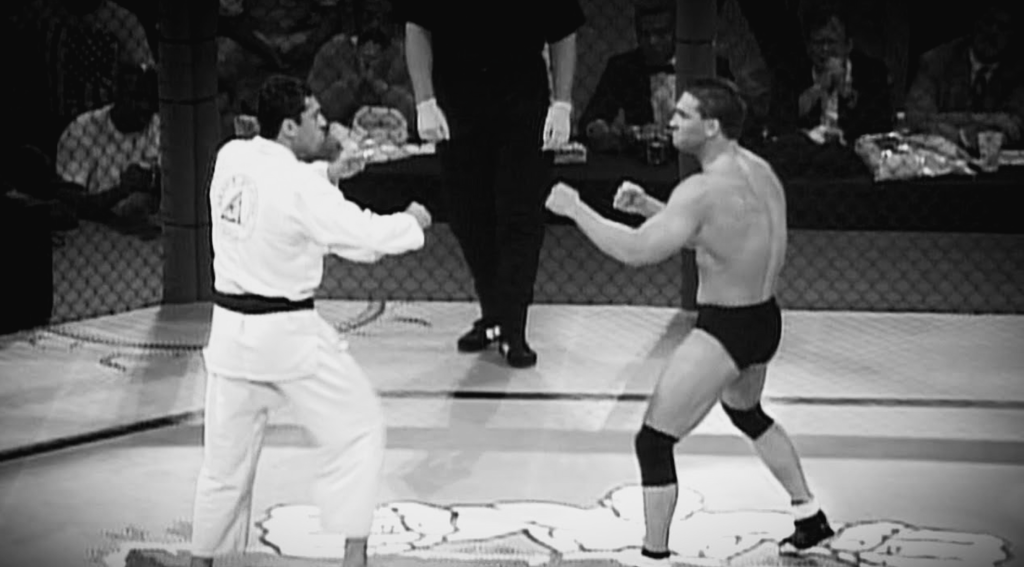When you think about self-defense, your mind might wander to scenes of high-flying karate kicks or Jason Bourne-style elbows flying in all directions. But let’s be real: in a real-world altercation, you’re probably not going to look like a stunt double in The Matrix. This is where Brazilian Jiu-Jitsu (BJJ) comes in and steals the show—quietly and with minimal flair but maximum effectiveness.
BJJ is often hailed as the perfect martial art for self-defense. Why? Because it’s designed for the everyday person, not just for superheroes in tights. You don’t need to be a towering hulk with fists like anvils. Nope, BJJ is all about technique, strategy, and a touch of patience—skills even us mere mortals can acquire.
1. Leverage: The Secret Sauce
Imagine you’re 5’4” and your attacker is the size of a linebacker who just finished eating his body weight in protein. Enter BJJ, which doesn’t require you to be a tank of muscle. Instead, it uses leverage and technique, allowing you to control, submit, or at least exhaust your opponent without having to bench press a car (Gracie, 2014).
The beauty of BJJ is in its economy of effort. You’re essentially letting gravity do the heavy lifting while you stay calm and cool. Let the other guy burn out his energy trying to get up—meanwhile, you’re just figuring out how to tie him into a knot that even Houdini couldn’t escape. Small person versus large person? BJJ says, “No problem.”

2. The Ground Game Advantage
Here’s a sobering fact: most street fights end up on the ground. And while your buddy with a black belt in Tae Kwon Do might look majestic throwing high kicks, it’s not super useful when you’re both rolling in a pile of leaves. BJJ thrives in these scenarios because it focuses on ground control. Whether you’re stuck underneath someone or attempting to hold them down until the police arrive, BJJ has a move for that (Peligro, 2008).
Ground fighting isn’t about brawling—it’s like chess with your body. You’ll find yourself plotting your next move while your attacker wonders how he ended up flat on his back. If BJJ were a video game, it would be the boss level that no one could beat. In short, when the fight goes to the ground, the person with the BJJ skills is going to have the upper hand—and possibly an armbar (Gracie, 2006).

3. Subduing, Not Destroying
We’ve all seen the action movies where the hero uses excessive force to take down the bad guys. Fun to watch? Absolutely. Practical in real life? Not so much. In reality, the goal of self-defense isn’t to destroy your attacker (no matter how much your inner Bruce Lee might want to). It’s to neutralize the threat as safely as possible. And guess what? BJJ excels at exactly that.
BJJ allows you to control or submit your attacker with techniques that are effective but non-lethal. Whether it’s a choke or a joint lock, you can make someone tap out (or just hold them in place) without causing significant harm. It’s like telling someone, “I could hurt you, but I’m really a nice person” in the most polite way possible. This makes BJJ an ideal self-defense martial art for people who don’t want to hurt others but still want to make sure they don’t get hurt (Pedreira, 2015).

4. Proven Effectiveness
Let’s take a quick trip down UFC memory lane. When Royce Gracie stepped into the Octagon in the early days of the UFC, he looked more like an accountant than a fighter. Yet he dominated the competition using his family’s BJJ techniques against much larger and stronger opponents. If BJJ can work in an arena full of blood-thirsty fans, it can definitely work when someone tries to steal your purse in the parking lot (Gracie, 2006).
It’s not just MMA fighters who have found success with BJJ. Law enforcement agencies and military units around the world also rely on BJJ techniques to control suspects without escalating violence. It’s practical, proven, and adaptable to nearly any situation.

5. Mental and Situational Awareness
BJJ isn’t just about learning how to choke someone—it’s also about improving your awareness and staying calm under pressure. When you’re rolling in a BJJ class, you learn to stay composed, even when things get intense. This ability to remain calm while solving problems (like getting out of an armbar) translates to real-world self-defense scenarios (Gracie, 2014).
In a dangerous situation, panicking is the worst thing you can do. BJJ teaches you to breathe, think, and then act. Plus, with all the sparring practice, you’ll develop quick decision-making skills. You know what they say: the best way to win a fight is to avoid one. But if avoidance isn’t an option, being cool-headed and strategic will give you a major advantage.
Conclusion
So why is BJJ the perfect martial art for self-defense? It’s simple—it’s practical, accessible, and downright effective. Whether you’re defending yourself against a larger opponent, controlling a chaotic situation on the ground, or de-escalating without causing harm, BJJ has the tools you need. Plus, as an added bonus, you’ll get in great shape, make some friends, and maybe even become the person people call when they need help opening a pickle jar.
References:
•Gracie, R. (2006). Brazilian Jiu-Jitsu: Theory and Technique. Invisible Cities Press.
•Gracie, R. (2014). Mastering Jujitsu. Human Kinetics.
•Peligro, K. (2008). The Gracie Way: An Illustrated History of the World’s Greatest Martial Arts Family. Invisible Cities Press.
•Pedreira, R. (2015). Choque: The Untold Story of Jiu-Jitsu in Brazil, Volume 2. Copacabana Publishing.

